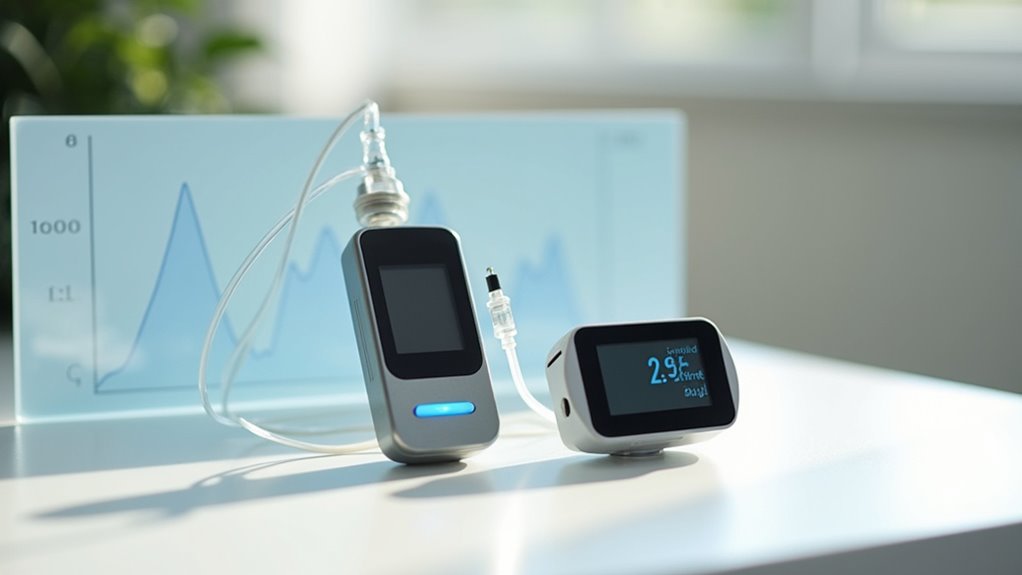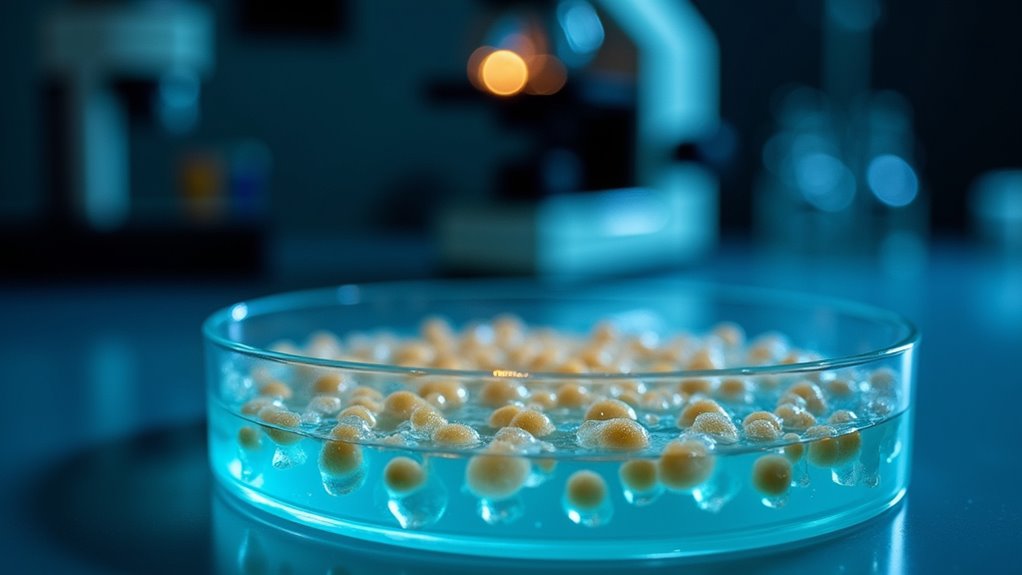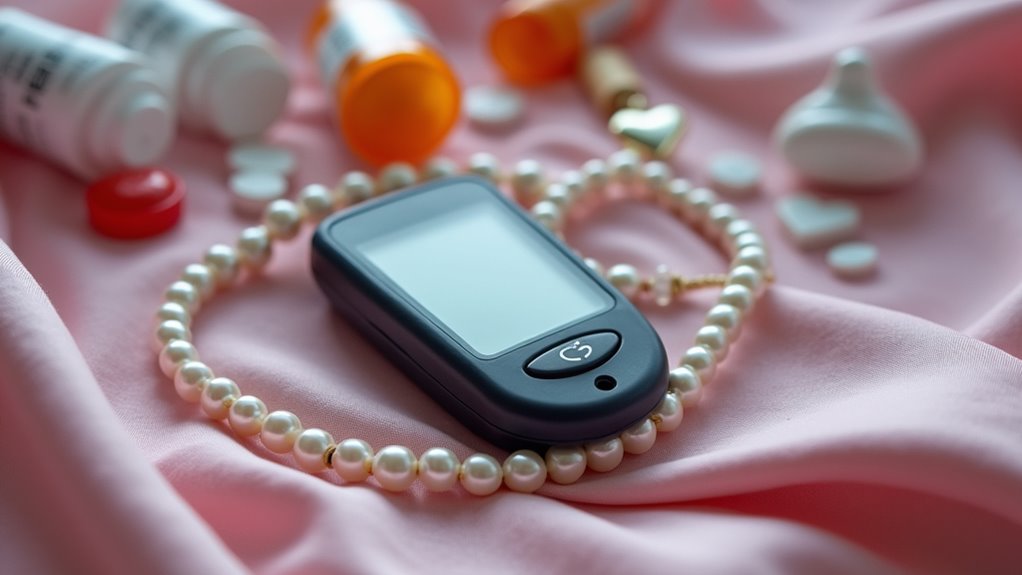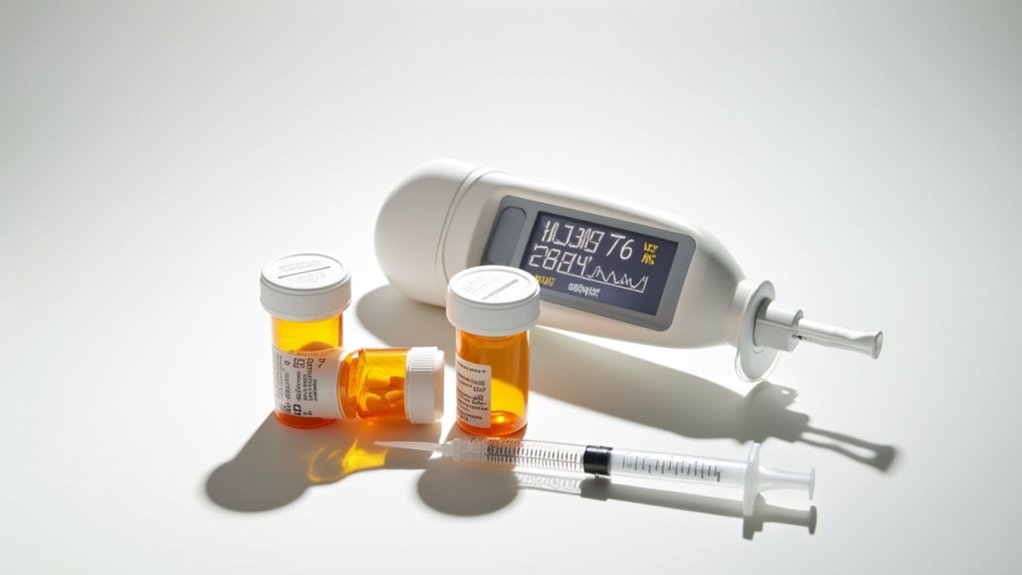While diabetes management has traditionally required constant vigilance and manual adjustments, automated insulin delivery (AID) systems are revolutionizing treatment for Type 1 diabetes patients. These systems combine insulin pumps, continuous glucose monitors, and sophisticated algorithms to automate what humans have been struggling to do manually for decades. The difference? Machines don’t get tired, forget, or miscalculate. They just work.
The core components make perfect sense. A pump delivers insulin, a CGM tracks glucose levels, and an algorithm makes decisions. No more 3 a.m. glucose checks. No more guessing insulin doses. Let’s face it—humans are terrible at being pancreases. The technology isn’t perfect yet, but it’s already changing lives. Since type 1 diabetics cannot produce their own insulin, these automated systems provide essential life-sustaining hormone delivery.
Machines don’t sleep, forget calculations, or burn out. Unlike humans, they excel at the relentless precision diabetes demands.
Clinical evidence isn’t just promising—it’s compelling. Meta-analyses and randomized controlled trials show significant improvements in Time in Range and HbA1c levels. Real-world studies confirm these findings across diverse populations. Patients spend less time dealing with dangerous lows and exhausting highs. Sleep improves. Anxiety decreases. For once, technology is actually making life better instead of just more complicated.
First-generation systems primarily prevented hypoglycemia. Second-generation hybrid closed-loop systems adjust basal insulin automatically. Future versions may incorporate glucagon and eliminate the need for meal announcements. Systems like Control-IQ can predict glucose levels up to 30 minutes in advance, enabling precise insulin adjustments before problems occur. Despite their benefits, research shows approximately 30% of youths discontinue AID use due to alarm fatigue and calibration requirements. Think about it—a system that handles both insulin and glucagon without user input. That’s not just an improvement; it’s a revolution.
Challenges exist, of course. The systems are expensive. Insurance coverage varies wildly. Device malfunctions happen. Not everyone has access to proper training. But compared to the relentless burden of traditional therapy? These problems seem manageable.
Traditional insulin therapy requires superhuman attention to detail. Automated systems don’t. They work while you sleep, exercise, work, and live. They’re not perfect substitutes for a functioning pancreas yet, but they’re getting closer. For many patients, the question isn’t whether to switch to automated delivery—it’s why they didn’t do it sooner.









